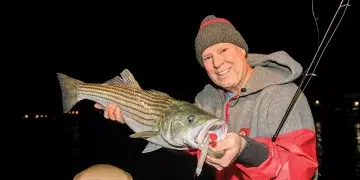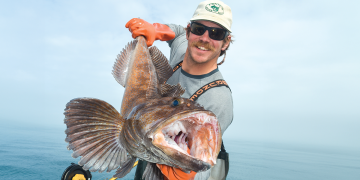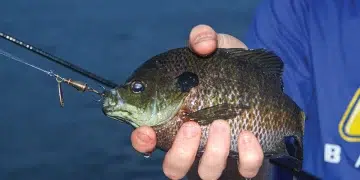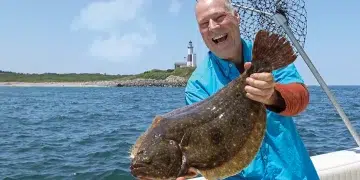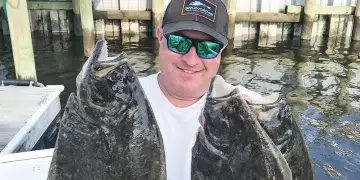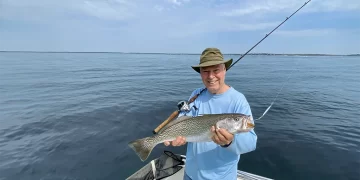How to Teach Kids to Fish: Making Memories and Catching Fun!

Teach a child to fish and you’ll both treasure the moments together.
Teaching kids to fish isn’t just about baiting a hook, casting, and bringing a catch back to the boat. It’s a great family outdoor activity and a chance to spend precious time with them away from the rigmaroles of daily life. They get to make memories, too, that they’ll carry with them forever. They may even grow to appreciate your interest and pass it down to their kids. Here are a few steps to consider when getting started.
Scout for Locations
Fishing means catching fish. Whether you plan to fish from the shore, the dock, or from a boat, try to find places where fish are plentiful. Take a trip to a local bait-and-tackle shop for locations and show children all the different gear and such, but focus on what they’ll need to start fishing. Don’t forget licenses as well.
Get Ready
Have your kids practice casting before getting to the water if possible. That will give them an idea of how to handle the rod, but just use a weight. Don’t add a hook until it’s time. Teach kids how to grip the handle of the rod keeping it in front of them in a 9 to 11 o’clock position. Explain how the reel handle turns and how to react to a bite.
Organize gear in advance to minimize stress, and double check you have it all—fishing gear, snacks, drinks, water, sunscreen, bug repellent, rain jackets, hats, first-aid kit, sunglasses, etc.
Fish Safe
The most important element when teaching your kid to fish is safety. Safety must come first. Life jackets, while sometimes uncomfortable, are a must for kids around water. Hooks have barbs so should only be handled by adults. If you prefer, barbs can be pinched down. Shakespeare’s Hide-A-Hook Float is a great device that hides the hook within the bobber for safer casting. Teach them to look around before casting. You don’t want the hook catching on something…or someone.
Subscribe Here For Weekly Updates
Talk Tactics
Boys and girls alike are naturally curious, so explain how a float works and moves when a fish bites. If casting jigs, tug on the line while the child holds the rod to simulate a hit. Demonstrate setting the hook, emphasizing that like any skill, it takes time to learn. Show them where fish will hang out, such as around logs or under brush or deeper swells in a river. If out on the ocean, point out how birds can indicate fish schools.
Cast Away
Review their previous practice time and use that sidearm cast as it’s better and safer for kids. Teach them how to shoulder-check so no one is in harm’s way. Show them how to bring the rod back, keeping it above the waist, and swinging it forward ending with a flick of the wrist while releasing the line and pointing the rod toward the target. Offer lots of encouragement, and guide their arm and fingers if they’re having a little trouble.
Gear for Success
Success can result from the simplicity of a bait and bobber on a lightweight rod. Buy a quality spinning or spin-cast combo between 3-and-a-half feet to 5 feet and spool the reel with 6-pound monofilament line. Worms and minnow soft-baits are durable and won’t spoil. Rig baits on a 1/32- to 1/8-ounce jig. Marabou or tinsel crappie jigs also work well. A jig dangled beneath a small float and occasionally twitched is an effective tactic for youngsters. For kids who want to become more engaged, teach them a slow reeling or hopping jig retrieve.
Play and Land
Learning to fish takes patience. Coach kids how to slowly and steadily play fish, stopping when the fish is at the water’s surface. Encourage kids to independently land a fish quickly or to ask for help. Once the catch is out of the water and admired with photos secured, demonstrate proper release methods. If it’s fish for dinner, explain why you keep some and release others.
Don’t Underestimate Their Abilities
Kids can learn quickly and if you give them the chance to do it on their own, they’ll get it. Try to avoid showing any frustration and don’t make it seem like they’re in school. Again, patience with a smile.
Have Fun
It’s important to realize that young kids won’t turn into professional anglers for a while, so be patient and just have fun—even if they just want to watch you fish or throw rocks from the shore. Fishing should be always be fun. Regardless of the number of fish caught, each outing will be a success.
Prepare for Next Time
Talk about the day on the way home. Get them excited about the next time and tell them how you feel about fishing—and that saying: A bad day of fishing is better than a good day at work…or at school in this case.
-by Steve Davis with Pure Fishing
Related Posts
The post How to Teach Kids to Fish: Making Memories and Catching Fun! appeared first on Southern Boating.
